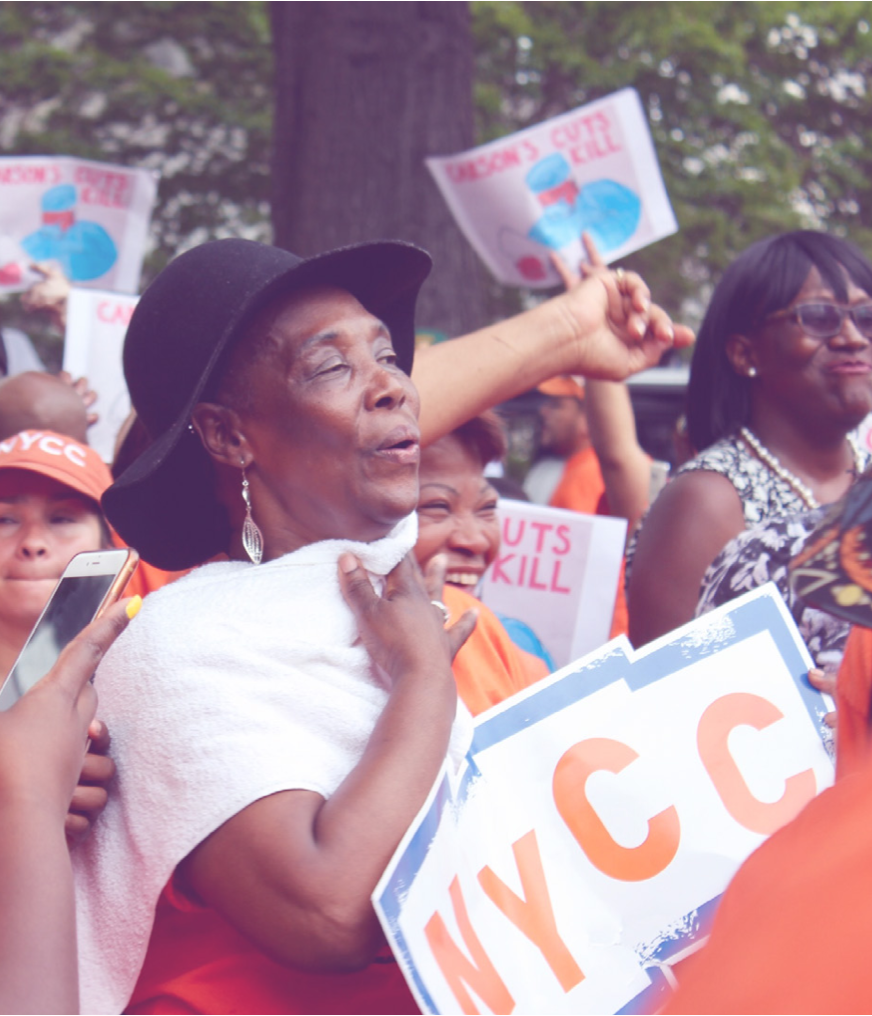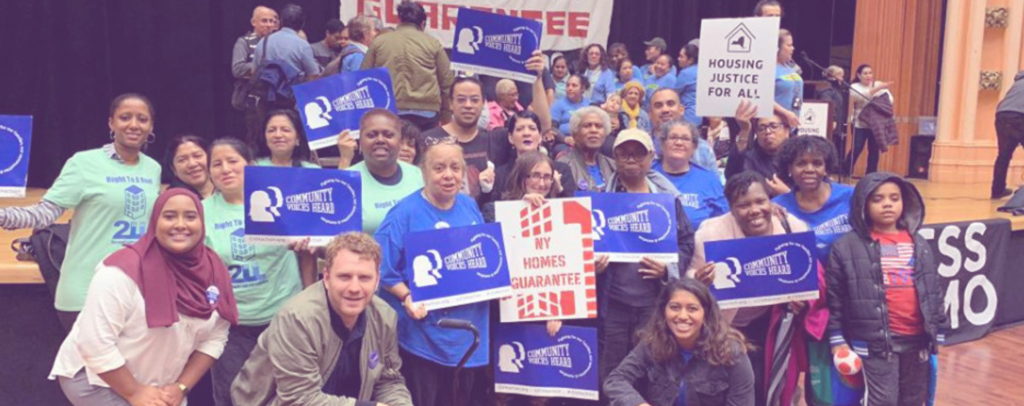Priority 1
Create an Integrated Housing Plan to End Homelessness and Promote Racial Equity
READ THE REPORT
New York City has historically had a siloed approach to housing planning, with separate and unequal attention to private housing, public housing, and homelessness. The administration’s Housing New York plan focuses primarily on HPD’s role in creating and preserving affordable housing, treating homelessness and public hous- ing as fundamentally separate issues. Additionally, oversight of housing, building, planning, and related issues currently falls within the purview of no fewer than eleven City agencies and Mayoral offices, including: Department of Housing Pres- ervation & Development (HPD); NYC Housing Authority (NYCHA); Department of Social Ser- vices (DSS), which includes the Human Resources Administration (HRA) and Department of Home- less Services (DHS); Department of Buildings (DOB); Department of City Planning (DCP); NYC Housing Development Corporation (HDC); NYC Economic Development Corporation (EDC); Department of Health & Mental Hygiene (DOHMH); NYC Commission on Human Rights (CCHR); HIV/AIDS Services Administration (HASA); and Mayor’s Office to Protect Tenants (MOPT).
Yet New Yorkers do not experience housing issues in these separate siloes. A family of New Yorkers at risk of homelessness due to housing quality issues and discrimination could intersect with at least six of these bureaucracies at once in an attempt to get their apartment fixed, hold their landlord accountable, and secure other permanent housing. Those multiple bureaucracies may or may not be coordinating with one another. This labyrinthine system can be overwhelming, especially for a family struggling with the everyday challenges of putting food on the table, staying healthy, and ensuring quality education for their children.

More important than efficiency, however, is the opportunity to meet the extraordinary needs of this moment. An estimated 79,000 people already live in shelters or on the streets, with homelessness among single adults on the rise. Thousands more are at risk of becoming homeless, many living in unsafe, overcrowded conditions. Even before the COVID-19 pandemic, in 2019, 40% of low-income New Yorkers were either homeless or severely rent-burdened (paying more than half of their income in rent) and 15% faced the threat of eviction.3 The number one cause of homelessness, particularly
for families, has been and continues to be lack of affordable housing.
Additionally, more than 360,000 NYCHA residents, whose average family income is $25,602 /year5, fear displacement as housing quality deteriorates, the agency privatizes units, and leadership fails to adequately include residents in decision-making. And all of these problems disproportionately impact BIPOC and immigrant New Yorkers.
The economic fallout of the pandemic threatens to exacerbate these situations, and further increase racial disparities, with over 735,000 New York City households estimated to have lost employment income as of June 2020.6 Applicable rent relief falls far short of the need, and is unavailable to many New Yorkers due to immigration status and other documentation requirements, and at risk of termination prior to economic recovery for others. The City and State have not guaranteed an extension of the eviction moratorium for the duration of the pandemic or an alternative to eviction once the moratorium is lifted for those at risk of losing their homes. Without intervention, the City faces an unprecedented economic crisis that falls decidedly along lines of racial and economic disparity.

In the summer of 2020, the movement for racial justice reached new heights in New York City and nationwide. The pandemic shined a spotlight on the structural racism that has literally shaped our city and impacts every aspect of daily life for New Yorkers of color, from housing, to transportation, to education, unemployment, and wages. Public housing residents are predominately Black and Latinx, as are those in the NYC shelter system, and those in low-rent private housing. The City’s recently released Where We Live fair housing plan shows clearly that the legacy of housing segregation persists and that discrimination continues to place constraints on housing options for New Yorkers of color.
The main priority for our elected leaders must be addressing these issues by dismantling their systemic underlying causes and replacing them with more just policies. The next administration must create and implement an Integrated Housing Plan that brings together all the agencies involved in housing, building, and planning to create one coordinated strategy focused on ending homelessness and promoting racial equity. In order to accomplish this, they must create a position of Deputy Mayor for Homelessness, Housing and Planning, and shift responsibility for oversight of and coordination between all relevant agencies, as well as creation of the plan, to this new Deputy Mayor.
The Mayor must identify this Deputy Mayor not based on their relationships with private developers and their “deal making” skills, but rather on their ability to think holistically about the causes and effects of racial, economic, and social inequity, as well as their ability to bring the most creative think- ers and doers together to implement collaborative and coordinated strategies for change.

The Integrated Housing Plan plan and its goals must be based on data measuring need and disparity; include shared metrics that require coordination across agencies; and propose solutions based on measurable goals for creating and preserving true affordability, preventing displacement, and providing decent, safe, and affordable permanent housing for those who are in the shelter system and/or experiencing street homelessness. The plan, with oversight from the new Deputy Mayor, will ensure that all relevant agencies are working together efficiently and coordinating directly on implementation.
There are many ways these shared metrics could work across agencies. As a start, all current pro- grams must be evaluated not on their individual merits, but on how they work to achieve broader goals in conjunction with other programs.
For example, the City should create measurable preservation goals for public housing, along
with its preservation and development goals for private housing, and coordinate more efficiently across NYCHA, HPD, and other relevant agencies to ensure equitable allocation of financing resources. DHS, NYCHA, and HPD must all have shared metrics for providing housing for the homeless. DCP must in turn ensure that planning decisions further these goals, and DOB must prioritize approvals for related construction projects. The Integrated Housing Plan must expand the most successful programs and maximize positive steps toward solutions to our current crisis.
All of the following priorities in this report should be key components of the Integrated Housing Plan. Our goal is to provide the framework and building blocks for the next group of elected City leaders, including and spearheaded by the Mayor, to make the necessary changes to create a city that ensures the right to a roof for all.